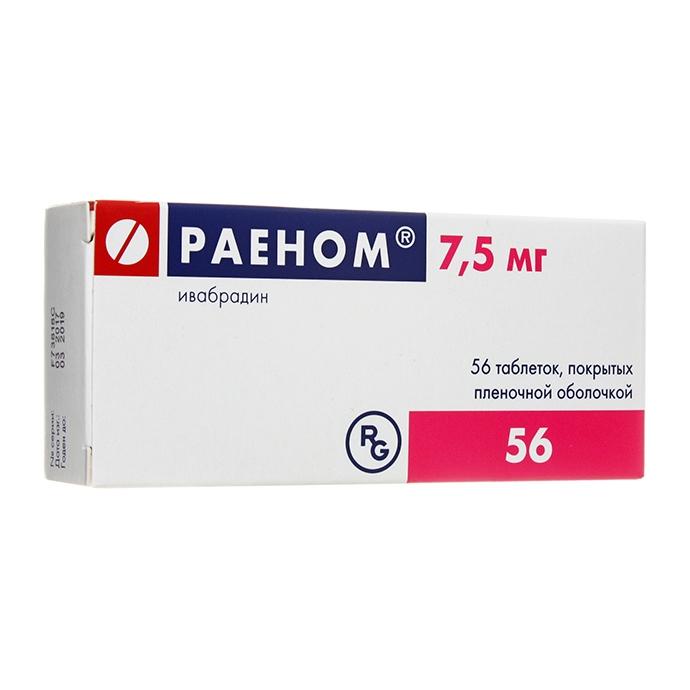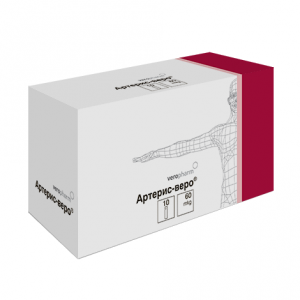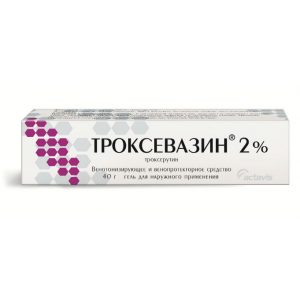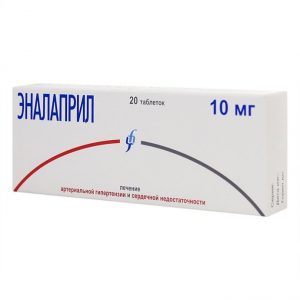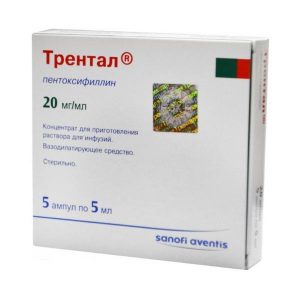Description
Pharmacological action
Ivabradine is a cardiac rhythm inhibitor whose mechanism of action is the selective and specific inhibition of If-channels of the sinus node, which control spontaneous diastolic depolarization in the sinus node and regulate heart rate.
Ivabradine has a selective effect on the sinus node, without affecting the timing of the impulses along the atrial, atrioventricular and intraventricular pathways, as well as the contractility of the myocardium and ventricular repolarization.
Contraindications
Hypersensitivity, resting heart rate below 60 / min (before treatment), cardiogenic shock, acute myocardial infarction, severe arterial hypotension (systolic blood pressure below 90 mmHg and diastolic blood pressure below 50 mmHg) , severe liver failure (more than 9 according to the Child-Pyug classification), SSSU, SA-blockade, CHF III-IV art. (NYHA classification – lack of clinical experience), artificial pacemaker, unstable angina pectoris, AV block II-III stage, acute cerebrovascular accident, simultaneous administration of potent inhibitors of cytochrome P450 CYP3A4 (including ketoconazole, itraconazole, clarithromycin, erythromycin, josamycin, telithromycin, nelfinavir, ritonavir, nefazodone) galactose intolerance, lactase deficiency, glucose-galactose deficiency (for LF containing lactose), pregnancy, lactation, up to 18 years of age (efficacy and safety not in tanovleny).
Composition
Active ingredient:
ivabradine hydrobromide – 8.795 mg (equivalent to ivabradine 7.5 mg).
Excipients:
lactose – 41.675 mg,
mannitol – 44.530 mg,
maltodextrin -3.000 mg,
croscarmellose sodium – 1.000 mg,
silicon dioxide colloidal – 0.500 mg,
0.5 mg magnesium.
Tablet shell:
Opadray pink – 3,000 mg (contains: polyvinyl alcohol -1.050 mg, talc – 0.716 mg, titanium dioxide – 0.705 mg, macrogol-3350 – 0.360 mg, methacrylic acid copolymer (type C) – 0.120 mg, yellow iron oxide dye -0.038 mg, red iron oxide dye – 0.007 mg, sodium bicarbonate – 0.004 mg).
Dosage and administration
Inside, 2 times a day (morning and evening), with meals.
The initial recommended daily dose is 10 mg per day (5 mg 2 times a day). Depending on the therapeutic effect, after 3-4 weeks the daily dose can be increased to 15 mg (7.5 mg 2 times a day).
If, during therapy, heart rate decreases less than 50 / min or symptoms occur, associated with bradycardia (dizziness, fatigue, or decreased blood pressure), you must use a lower dose of the drug.
If, with a reduced dose, heart rate does not normalize and remains less than 50 / min, the drug is canceled.
In elderly patients, treatment should begin with an initial dose of 2.5 mg (1/2 tablet of 5 mg) 2 times a day, an increase in the daily dose is possible depending on the patient’s condition.
Side effects
From the side of the organ of vision: very often – a change in light perception (photopsy) was observed in 14, 5% of patients were described as a transient change in brightness in a limited area of ² ¹ ² ¹the visual field. As a rule, such phenomena were provoked by a sharp change in the intensity of illumination in the area of ² ¹ ² ¹the visual field. Basically, photopsia appeared in the first 2 months of treatment with subsequent repetition. The severity of photopsia was usually mild or moderate. The appearance of photopsy was stopped on the background of continued therapy (77.5% of cases) or after its completion. In less than 1% of patients, the appearance of photopsy was the reason for refusing treatment. Often – blurred vision.
On the part of CVS: often – bradycardia (3.3% of patients, especially in the first 2-3 months of therapy, 0.5% of patients developed severe bradycardia with a heart rate of not more than 40 beats / min) AV block I degree ventricular extrasystole infrequently – feeling of palpitations, supraventricular extrasystole of unspecified frequency – arterial hypotension, possibly related to bradycardia, the following adverse events detected in clinical trials occurred with the same frequency both in the group of patients receiving ivabradine and in the comparison group, which suggests their connection with the disease as such, and not taking ivabradine – sinus arrhythmia angina pectoris, incl. unstable atrial fibrillation myocardial ischemia myocardial infarction and ventricular tachycardia.
From the digestive system: infrequently – nausea, constipation, diarrhea.
From the side of the central nervous system: often – headache, especially in the first month of therapy, dizziness, possibly associated with bradycardia infrequently – shortness of breath, vertigo, muscle spasms of unspecified frequency – fainting, possibly associated with bradycardia.
Lab performance: infrequently – hyperuricemia, eosinophilia, increased plasma creatinine concentration.
From the skin and subcutaneous fat: unspecified frequency – skin rash, itching, erythema, angioedema, urticaria.
General disorders and symptoms: unspecified frequency – asthenia, fatigue, malaise, possibly related to bradycardia.
Overdose of
Symptoms: An overdose of ivabradine can lead to severe and prolonged bradycardia.
Treatment: The treatment of severe bradycardia is symptomatic, carried out in specialized departments.
In the case of the development of bradycardia in combination with impaired hemodynamic parameters, symptomatic treatment with iv intravenous beta-adrenergic agonists such as isoprenaline is indicated.
If necessary, an artificial pacemaker can be staged.
Storage conditions
The drug should be stored in its original packaging to protect it from moisture, out of the reach of children, at a temperature not exceeding 30 ° C.
Expiration
2 years
Terms and conditions
prescription
dosage form
tablets
Gedeon Richter Vengriya
